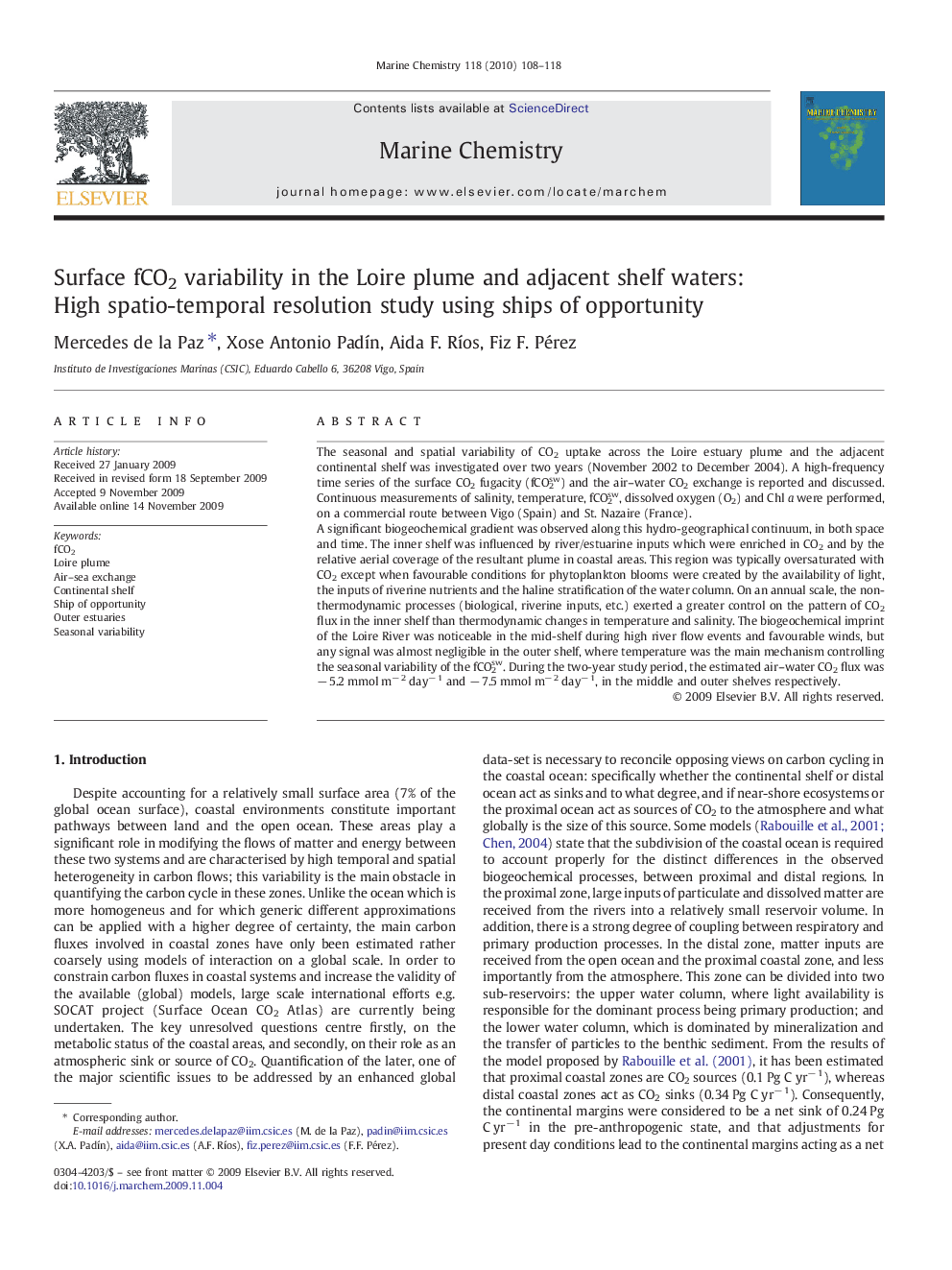| Article ID | Journal | Published Year | Pages | File Type |
|---|---|---|---|---|
| 1263105 | Marine Chemistry | 2010 | 11 Pages |
The seasonal and spatial variability of CO2 uptake across the Loire estuary plume and the adjacent continental shelf was investigated over two years (November 2002 to December 2004). A high-frequency time series of the surface CO2 fugacity (fCO2sw) and the air–water CO2 exchange is reported and discussed. Continuous measurements of salinity, temperature, fCO2sw, dissolved oxygen (O2) and Chl a were performed, on a commercial route between Vigo (Spain) and St. Nazaire (France).A significant biogeochemical gradient was observed along this hydro-geographical continuum, in both space and time. The inner shelf was influenced by river/estuarine inputs which were enriched in CO2 and by the relative aerial coverage of the resultant plume in coastal areas. This region was typically oversaturated with CO2 except when favourable conditions for phytoplankton blooms were created by the availability of light, the inputs of riverine nutrients and the haline stratification of the water column. On an annual scale, the non-thermodynamic processes (biological, riverine inputs, etc.) exerted a greater control on the pattern of CO2 flux in the inner shelf than thermodynamic changes in temperature and salinity. The biogeochemical imprint of the Loire River was noticeable in the mid-shelf during high river flow events and favourable winds, but any signal was almost negligible in the outer shelf, where temperature was the main mechanism controlling the seasonal variability of the fCO2sw. During the two-year study period, the estimated air–water CO2 flux was − 5.2 mmol m− 2 day− 1 and − 7.5 mmol m− 2 day− 1, in the middle and outer shelves respectively.
